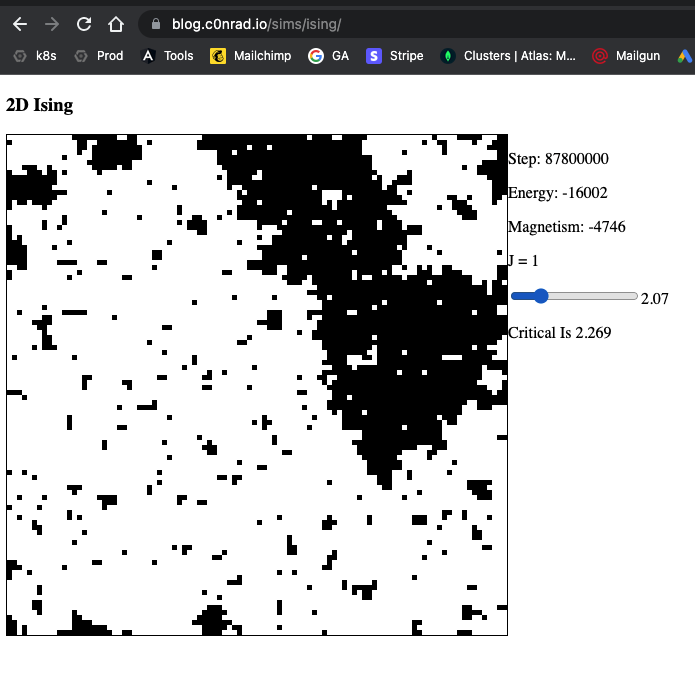We build out a simple Ising model simulator for future expansion.
Overview
The Ising model is probably the most famous (real) physics simulation. It’s a useful tool for studying phase transitions and critical phenomena.
Even though it’s relatively simple, and almost 100 years old, it’s still an area of active research.
The most common usecase is for studying magnetization. We know that materials are composed of a huge quantity of electrons, and we also know that electrons have a property called spin that somewhat acts like a magnet. When a large number of these electrons spin in the same direction we get a bar magnet.
But it’s a balancing act to have a bar magnet.
On one hand, a collection of electrons spinning in the same direction is lower energy, but there’s also a non-stop barrage of collisions and vibrations in the quantum world that will upset the system from all pointing in the same direction.
If we take a room temperature bar magnet and heat it up, it will slowly lose its magnetism. The thermal jitters will disrupt the overall magnetism.
Simulation
To model this, we imagine a 2D grid where each spot can either point up or down.
We then perform a number of steps where at each step we:
- Pick a random spot
- Calculate the energy difference if the spot was flipped
- If the energy is less, accept and flip (nature likes minimum energy)
- If \( e^{-dE/T} \) is greater than a randomly generated number (0,1), accept and flip
- Otherwise reject and continue
Results
It’s ugly and barebones, but it’s a good starting ground, and the critical temperature came out correctly. (I’ll describe critical temperature and the math in the next blog post).
Conclusion
Good steps so far! I’m excited to dig into the math and solve analytically the 2D case, and also add some features to the simulation (charts of E/M, sim controls).
